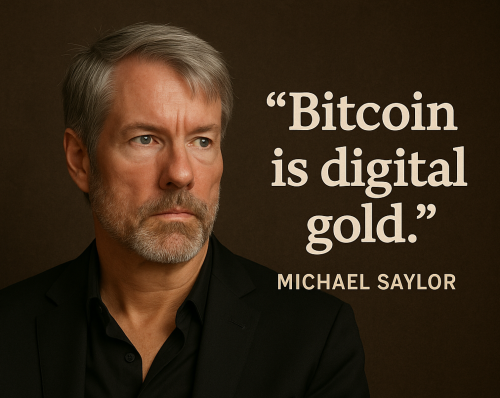Bitcoin Bet: Analyzing MicroStrategy's Acquisition Approach

Bitcoin Bet: Analyzing MicroStrategy's Acquisition Approach MicroStrategy has become synonymous with corporate Bitcoin investment strategies, setting itself apart as a pioneer in integrating digital assets (Bitcoin, Solana, Ripple, Ethereum, USDT, USDC, NFTs ) into traditional business balance sheets. Since first purchasing Bitcoin in 2020, the company has consistently doubled down, converting treasury reserves and raising capital to accumulate more of the digital asset. This bold and controversial strategy, spearheaded by Executive Chairman Michael Saylor, has triggered widespread discussion on institutional crypto adoption. This article analyzes the rationale, risks, and potential long-term impact of MicroStrategy’s Bitcoin bet.
A Timeline of Accumulation
MicroStrategy began its Bitcoin accumulation in August 2020, purchasing 21,454 BTC for $250 million. Since then, the company has executed dozens of acquisitions through:
- Direct Treasury Allocations
- Convertible Debt Offerings
- Equity Sales and Bond Issues
As of early 2025, MicroStrategy (NASDAQ: MSTR) has made history as the first major publicly traded company to fully embrace Bitcoin as a treasury reserve asset. Under the leadership of Michael Saylor, the business intelligence firm has gone all-in on Bitcoin, converting nearly its entire cash reserves, and even taking on debt, to accumulate 214,400 BTC (worth over $14 billion as of May 2024), based on current market prices. This makes it the largest corporate holder of Bitcoin globally, surpassing even Tesla and other institutional investors.
MicroStrategy vs. Other Corporate Bitcoin Holders
| Company | BTC Holdings | Strategy | Key Difference |
|---|---|---|---|
| MicroStrategy | 214,400 BTC | Pure accumulation (treasury asset) | No operational use, just holding |
| Tesla | ~10,000 BTC | Accepts BTC payments (sometimes) | More cautious approach |
| Block (Square) | 8,027 BTC | Bitcoin ecosystem investments | Focused on adoption, not just holding |
Conclusion: MicroStrategy is the most aggressive, while others integrate Bitcoin more cautiously.
Strategic Rationale
MicroStrategy's acquisition strategy is underpinned by several key beliefs: Bitcoin as Digital Gold: Saylor has likened Bitcoin to digital gold, an immutable, finite store of value that outpaces inflation and fiat devaluation. Its scarcity (21 million maximum supply) is central to its appeal. Bitcoin’s design as "digital gold" stems from its engineered scarcity and decentralized nature, making it a compelling hedge against inflation and fiat currency devaluation. Like physical gold, Bitcoin is durable, portable, divisible, and scarce, but with key advantages: it is digitally native, globally accessible, and verifiable without intermediaries.

With a hard-capped supply of 21 million coins, Bitcoin’s issuance follows a predictable, diminishing rate (halving every four years), ensuring it cannot be debased by arbitrary monetary policy. This fixed supply stands in stark contrast to fiat currencies, which central banks can print indefinitely, eroding purchasing power over time. As governments worldwide engage in aggressive fiscal stimulus and debt monetization, Bitcoin’s deflationary model positions it as a potential long-term store of value, one that cannot be confiscated or censored. Michael Saylor and other Bitcoin proponents argue that its digital scarcity makes it superior to gold in the modern financial system. While gold requires secure storage and costly verification, Bitcoin’s blockchain enables instant, borderless transactions with cryptographic proof of ownership. Additionally, Bitcoin’s programmable nature allows for innovations like multisig wallets, smart contracts, and Layer-2 solutions (e.g., Lightning Network), enhancing its utility beyond mere hoarding. As institutional investors and corporations seek inflation-resistant assets, Bitcoin’s digital, finite, and decentralized properties strengthen its case as the ultimate form of "sound money" for the digital age, a role gold once held in the analog era. However, unlike gold, Bitcoin’s volatility and relative youth mean its status as a mature reserve asset remains a work in progress.
- "Treasure, Not Cash" Michael Saylor argues that cash is a depreciating asset, eroded by inflation and central bank money printing. In contrast, Bitcoin's fixed supply of 21 million makes it inherently scarce, functioning as a deflationary hedge. Unlike fiat, which loses value over time, Bitcoin’s digital scarcity preserves purchasing power long-term. Saylor sees Bitcoin as superior "treasure", a durable store of value for corporations and individuals alike, immune to the devaluation risks plaguing traditional currencies..
- Leverage on Conviction: By issuing debt and raising capital, MicroStrategy essentially leverages its balance sheet to increase Bitcoin exposure, amplifying both potential returns and risks.
- Long-Term Horizon: The company has no plans to sell its holdings in the short term, treating Bitcoin as a 100-year asset. This positions MicroStrategy as a long-term believer in crypto's staying power.
Financial Engineering Behind the Strategy
MicroStrategy has used financial instruments to fuel its Bitcoin strategy:
- Convertible Notes: Low-interest convertible bonds issued to fund Bitcoin purchases, including a notable $650 million round in 2020.
- Stock Offerings: ATM (At-The-Market) equity sales to raise capital without issuing new debt, helping maintain flexibility.
- BTC-Backed Loans: Using Bitcoin holdings as collateral to raise further funds while keeping ownership intact.
This financial engineering has allowed the company to significantly increase exposure without drawing on operational revenue. However, it also introduces balance sheet volatility and risk if Bitcoin’s value drops.
Market Reactions and Investor Sentiment
- Stock Performance: MicroStrategy's stock (MSTR) has closely tracked Bitcoin’s performance. During bull runs, the stock has outperformed tech benchmarks. In downturns, it has suffered significant corrections, highlighting its high correlation with BTC.
- Institutional Reception: While some investors applaud the visionary approach, others criticize the high-risk concentration and lack of diversification.
- Media Spotlight: Saylor’s vocal advocacy has turned MicroStrategy into a poster child for corporate crypto adoption, influencing others like Tesla, Block (formerly Square), and smaller public companies.
Risk Profile and Volatility
- Price Volatility: The company’s balance sheet is extremely sensitive to Bitcoin price swings. A 20% drop in BTC can result in billions in unrealized losses.
- Regulatory Uncertainty: Future crypto regulation could impact asset liquidity, custody practices, or accounting treatment.
- Debt Load: With hundreds of millions in debt tied to Bitcoin purchases, MicroStrategy’s leverage magnifies both gains and losses.
- Reputational Risk: Tying a company's brand so closely to a volatile asset class can polarize shareholders and complicate corporate governance.
Broader Impact on Corporate Adoption
MicroStrategy has arguably opened the door for:
- Treasury Diversification: Other firms exploring Bitcoin or stablecoins as reserve assets to hedge against inflation.
- Mainstream Legitimacy: Bitcoin viewed more seriously as a strategic asset rather than merely a speculative investment.
- Institutional Product Demand: The rise in corporate interest has fueled demand for Bitcoin ETFs, custody services, and regulated investment vehicles.
- Notably, MicroStrategy’s strategy has been referenced in discussions around BlackRock's and Fidelity’s ETF products, further legitimizing Bitcoin in institutional finance.
Future Outlook
With Bitcoin ETFs approved in the U.S. and broader institutional participation on the rise, MicroStrategy’s early bet may prove prescient. However, its long-term success depends on Bitcoin’s sustained value appreciation and regulatory clarity. A key factor will be how macroeconomic conditions, such as inflation, interest rates, and global monetary policies, impact the perception and performance of digital assets. If Bitcoin continues to gain adoption as an inflation hedge and store of value, MicroStrategy stands to benefit enormously. On the flip side, a prolonged crypto bear market or regulatory crackdown could place enormous strain on the company’s leveraged position and investor confidence.
Conclusion
MicroStrategy’s acquisition approach is bold, polarizing, and pioneering. By transforming its balance sheet into a Bitcoin reserve, the company has taken a massive strategic gamble one that redefines how traditional firms can interact with emerging financial paradigms.
Whether it becomes a model for others or a lesson in overexposure remains to be seen, but its place in the story of institutional crypto adoption is undeniable. As the digital economy matures, MicroStrategy will either be remembered as a visionary leader or a cautionary case study in financial overreach.



Comments ()